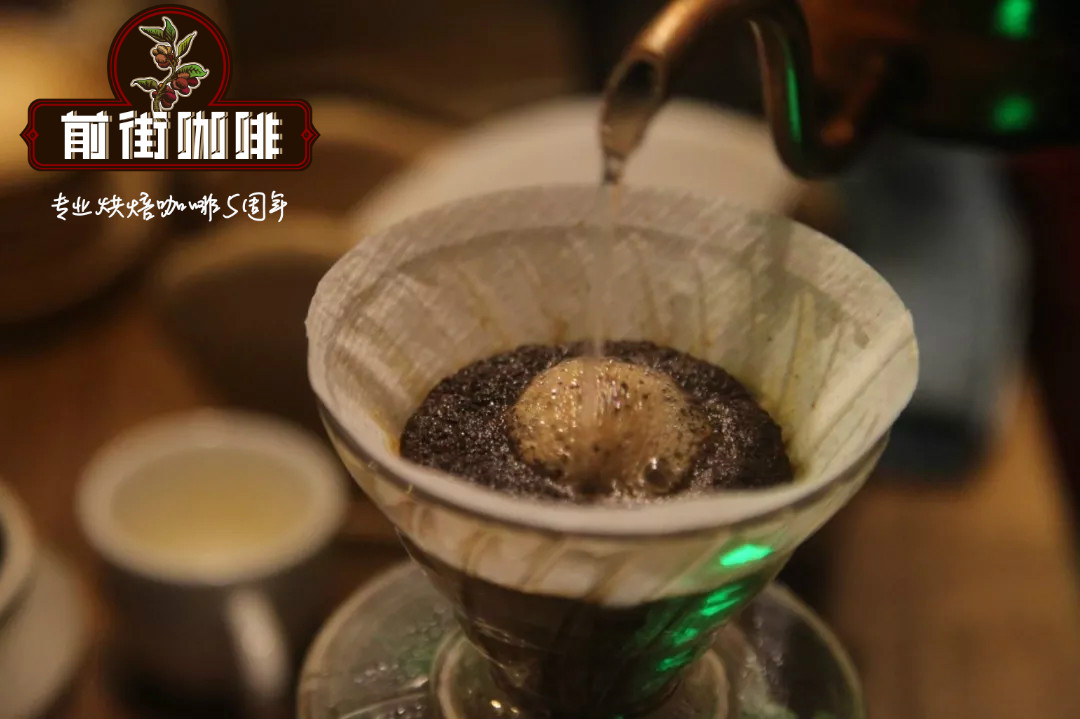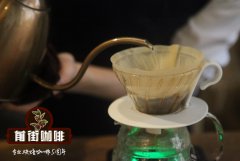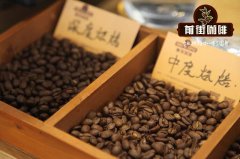How about Indonesian coffee, the largest coffee producer in Asia? How should I drink West Java coffee?

Professional coffee knowledge exchange more coffee bean information please follow the coffee workshop (Wechat official account cafe_style)
Coffee production in Asia is second only to Central and South America. Indonesia has always been the largest coffee producer in Asia, but the situation has changed in recent years. With the aid of the Olympic Games of the World Bank, Vietnam's production expanded rapidly and officially squeezed out of Indonesia in 1999 to become the largest coffee producer in Asia. However, Vietnam is dominated by sturdy beans, which does not belong to the category of boutique coffee. Vietnam produced 957000 tons of coffee in 2007, making it the largest coffee producer in Asia and the second largest coffee producer in the world. Indonesia produced 420000 tons of coffee beans in the same year, ranking second in Asia. India produces 291000 tons of coffee beans, ranking third in Asia. The body of Asian coffee is higher than that of Central and South American and African beans, but its sour taste is lower, with slightly sunken wood, herb, spice and earthy flavor, and the low and stuffy flavor is higher than the rising sour flavor.
At the end of the 17th century, the Dutch East India Company transplanted Indian Arabica trees to Jakarta on the island of Java. Due to the favorable climate and soil, Arabica quickly spread to Sumatra in the northwest of Java and Sulawesi, another large island in the northeast. However, in the 1880s, when serious leaf rust broke out in Java and Arabica withered, the Dutch switched to the case-resistant Robusta species to stabilize Indonesia's coffee industry. To this day, Robusta is still the main coffee in Indonesia, accounting for 90% of Indonesia's coffee production, distributed in the low-altitude areas of Java and Bali. The elegant Arabica is mainly distributed in the higher elevations of northern Sumatra, Sulawesi and Java, accounting for only about 10% of Indonesia's coffee production, but the reputation of Mantenin, Golden Mantenin, Lake Lake Tawar, Gayo Mountain, Ache, Sulawesi, Old Manning and Old Brown Java has made Indonesian coffee famous in the boutique world for decades. Not dragged down by other inferior Robusta species.
Mandheling seems to be synonymous with Indonesian boutique coffee. In fact, Mandheling is neither the name of the Indonesian place name, the name of the producing area, the name of the port, nor the name of the coffee variety, but a mispronunciation of Mandaining, an ethnic group that used to live in Sumatra.
Sumatra is the main producing area of Indonesian boutique coffee beans, and the coffee system is very complex. According to the book introduction, it can be divided into four types:
(1) Mantenin refers to the most famous half-sun or sun-dried beans around Lake Toba (Lake Toba) in north-central Sumatra and the Lindong Mountains (Lintong) at an altitude of 900-1200 meters above sea level on the southwest coast. The Batak is the backbone of coffee farmers in this area. It has the unique fragrance of herbs and trees.
(2) Golden Manning, after four times of manual screening, is higher than the average Manning. Mellow and bright, good sweetness.
(3) Lake Tawa coffee refers to washed, semi-washed or sun-dried beans (less) near Lake Tawa in the northernmost part of Sumatra at an altitude of 800m to 1600 m above sea level. The sour smell is bright, and the stuffy fragrance is not obvious. The taste of "Sumatra Axie Gold" (Sumatra Ache Gold) has the classic fruit sweetness of Raminita, with obvious peach and almond flavors and soft acidity, which is unique to Indonesia.
(4) Old Manning, tastes as sweet as honey and Java Old Brown. The ripening of aged beans takes about 2-3 years, which can be called kung fu beans. The color of aged beans is yellowish brown or dark brown, somewhat indecent, but the sweetness (sweetness) is excellent, and the aged Java Old Brown is better than aged Mantenin in sweetness, mellowness and cleanliness.
The English words "Celebes", "Toraja" and "Kalossi" often appear on the sacks of "Sulawesi" coffee. "Celebes" is the old name of the island under Dutch rule, which has long been changed to Sulawesi; "Toraja" is not a place name, a city name, nor a variety name, but Toraja, an ethnic group good at growing coffee in the mountains of central Suvira, and the name of the island's boutique beans. And the above-mentioned Mandainin and Guao belong to the same people who are proficient in growing coffee; "Kalossi" is a small town in the middle of the island, Kalosi, is a centralized trading place for Toraja (Taroga) coffee beans.
Toraja (Taroga) is also a rare boutique bean in the world, with an annual output of about 1000 metric tons, distributed in the rugged slopes of about 1200 meters in the middle and southwest of Sulawesi. It is not easy to plant and harvest, with an average annual yield of only 300kg per hectare. Far lower than the average of more than 1000 kg in Central and South America. The three major estates in Toraja (Taroga) are: "PT Kapal Api" has 2000 hectares of coffee; "CSR" ranks second with 1100 hectares of coffee; and "Toarco Jaya" of Japan's "Key Coffee" is the third largest with 700ha. In other words, Toraja Toraja (Taroga) is more precious and rarer than Manning or Golden Manning.
Toraja (Taroga) is washed or semi-washed, with brighter acidity and layers than Sumatra's or Golden Manning. There is a strong caramel sweetness, but Tusao, sunwood and mellow thickness are much more convergent than Mantenin, with slightly floral aromas.
Bean seed: Arabica
Flavor: for Indonesian volcanic soil, alpine coffee, with apple sweet and floral aroma, taste delicate and smooth, rich aroma, stay in the end of the tongue, full of the whole mouth.
END
Important Notice :
前街咖啡 FrontStreet Coffee has moved to new addredd:
FrontStreet Coffee Address: 315,Donghua East Road,GuangZhou
Tel:020 38364473
- Prev

Ethiopian Hambera Coffee 5.0 Sidama Coffee Flavor Taste Characteristics Introduction
Professional coffee knowledge exchange More coffee bean information Please pay attention to coffee workshop (Weixin Official Accounts cafe_style) Several important Ethiopian coffee producing areas, such as Yejiashev and Sidamo, have received considerable attention in recent years. Guji is also a part of Oromia Asia, southwest Ethiopia, south of Addis Ababa, the capital.
- Next

What is the taste of coffee? the taste spectrum of coffee is determined by the degree of baking.
Professional coffee knowledge exchange more coffee bean information Please pay attention to the coffee workshop (Wechat official account cafe_style) Coffee taste spectrum consists of smell spectrum and taste spectrum, the former directs dry and wet aroma, while the latter refers to water-soluble taste. The aroma of the flavor spectrum is appreciated by the sense of smell before and after the nose, and the liquefaction taste of the taste spectrum is captured by the sense of taste. The smell and taste of coffee often depend on the variety,
Related
- Detailed explanation of Jadeite planting Land in Panamanian Jadeite Manor introduction to the grading system of Jadeite competitive bidding, Red bid, Green bid and Rose Summer
- Story of Coffee planting in Brenka region of Costa Rica Stonehenge Manor anaerobic heavy honey treatment of flavor mouth
- What's on the barrel of Blue Mountain Coffee beans?
- Can American coffee also pull flowers? How to use hot American style to pull out a good-looking pattern?
- Can you make a cold extract with coffee beans? What is the right proportion for cold-extracted coffee formula?
- Indonesian PWN Gold Mandrine Coffee Origin Features Flavor How to Chong? Mandolin coffee is American.
- A brief introduction to the flavor characteristics of Brazilian yellow bourbon coffee beans
- What is the effect of different water quality on the flavor of cold-extracted coffee? What kind of water is best for brewing coffee?
- Why do you think of Rose Summer whenever you mention Panamanian coffee?
- Introduction to the characteristics of authentic blue mountain coffee bean producing areas? What is the CIB Coffee Authority in Jamaica?

